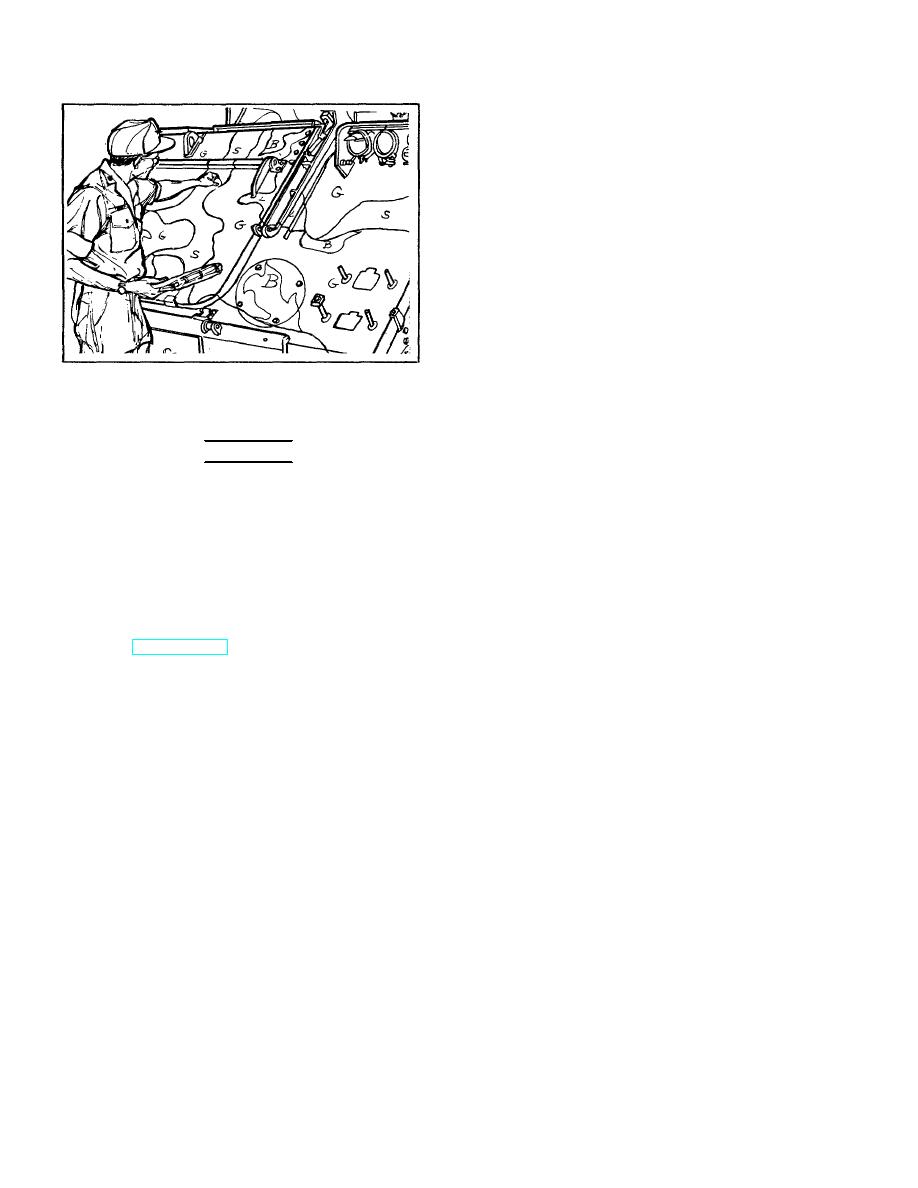
TB 43-0209
most of the liquid portion into a clean container. Stir the
thick settled portion (pigment) in the bottom until all
chunks are softened and dissolved. Restore the poured
off portion a little at a time, stirring constantly with a lifting
and beating motion.
"Box" the paint thoroughly by pouring it from one
container to another several times, stirring the paint for a
few minutes between each transfer.
NOTE
Do not "box" lacquer, as this will
cause a loss of the liquid portion by
(2) Straining. When paint stands over a period of
time, a skin may form over the surface and the pigment
Figure 32. Applying Pattern with Chalk.
may form into chunks to the extent that stirring will not
mix all of the ingredients properly. In such cases, strain
29. CAMOUFLAGE PAINTING
the paint through a strainer into a clean container,
discarding the residue left in the strainer. Do not strain
WARNING
CARC coatings, however. CARC coatings which cannot
be properly mixed will be resealed and disposed of as
The local safety office and preventive
hazardous wastes.
medicine support activity must be
(3) Thinning.
consulted prior to initial CARC
(a) When it is necessary to thin paint, use a
painting.
small amount of the prescribed thinner. Because of its
volatility, thinner will evaporate from the paint film,
The paints and thinners to be used in pattern painting are
leaving practically the same ratio of vehicle to pigment
to be obtained through normal supply channels. Pattern
per square foot of surface as the paint would have
painting will begin upon receipt of the necessary pattern
provided before thinning. The warmer and drier the
designs and paints. Use the equipment and procedures
weather, the less thinner is needed because heat tends
described in TM 43-0139 to accomplish the painting.
to thin it. More thinner is required in cold weather to
hasten the drying and hardening of the film. Thinner
30. TECHNIQUES OF MIXING AND THINNING
should be used with care, as the less used, the more
a. Method.
durable the applied coat will be.
The best, quickest, and easiest method of painting is by
(b) Polyurethane coatings may be thinned up to
spraying. Paint rollers are used on large surfaces when
20 percent by volume with thinner MIL-T-81772, Type I,
spraying is impractical. Paints are brushed on when
or with the manufacturer's recommended thinner. Epoxy
other methods are impractical or special equipment is
primers which are blended (admixed) four to one by
not available.
volume, such as MIL-P-52192 and MIL-P-53022, may be
In general, the use of brushes is confined to touchup
thinned up to 20 percent by volume with epoxy thinner
jobs.
MIL-T-81772, Type II.
Epoxy enamels and primer which are blended one to one
b. Readiness.
by volume, such as MIL-C-22750 and MIL-P-23377,
In most cases, paints are issued ready mixed. Hence
usually have satisfactory spray viscosities, but may be
color blending is not required. CARC paints MIL-C-46168
thinned with small amounts of MIL-T-81772, Type II, if
and MIL-C-22750, however, are issued in a two-
necessary. Water is used to thin MIL-P-53030.
component form and require accurate mixing techniques.
(c) Paints which contain a slow-drying vehicle may
c. Preservation.
require additional thinner.
(1) Stirring. Stir paints well before use. If the
liquid portion (vehicle) has separated from the pigment,
pour off
37

